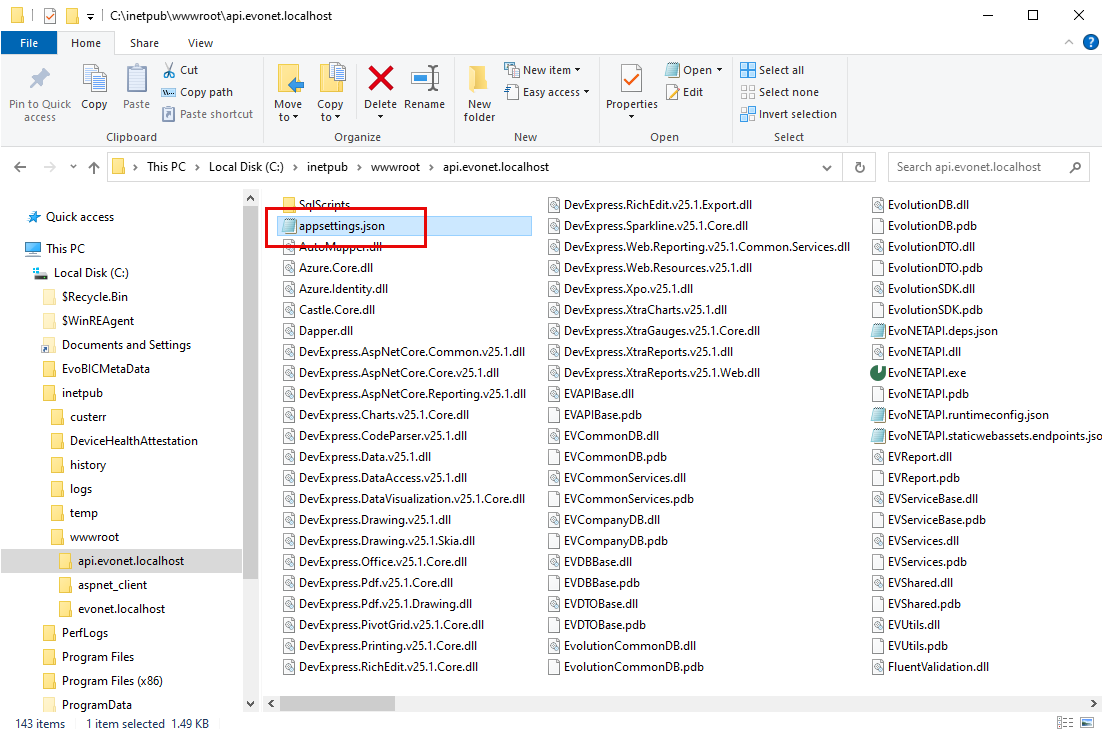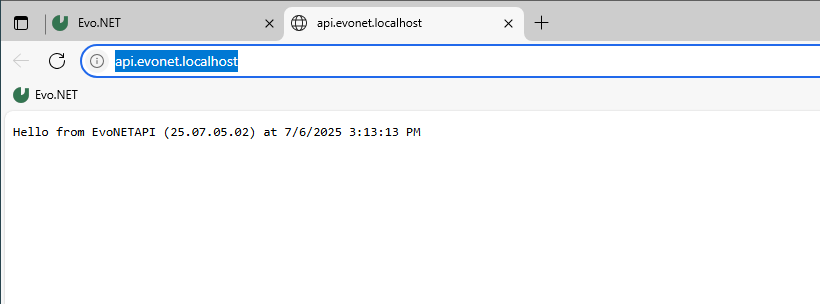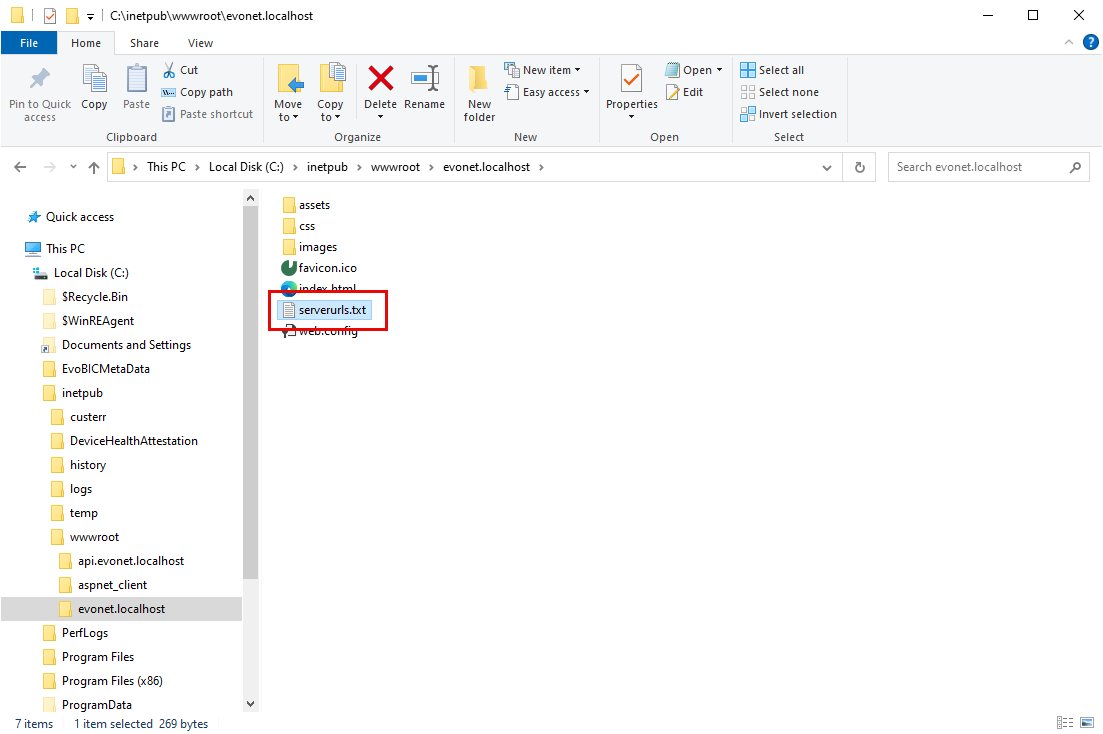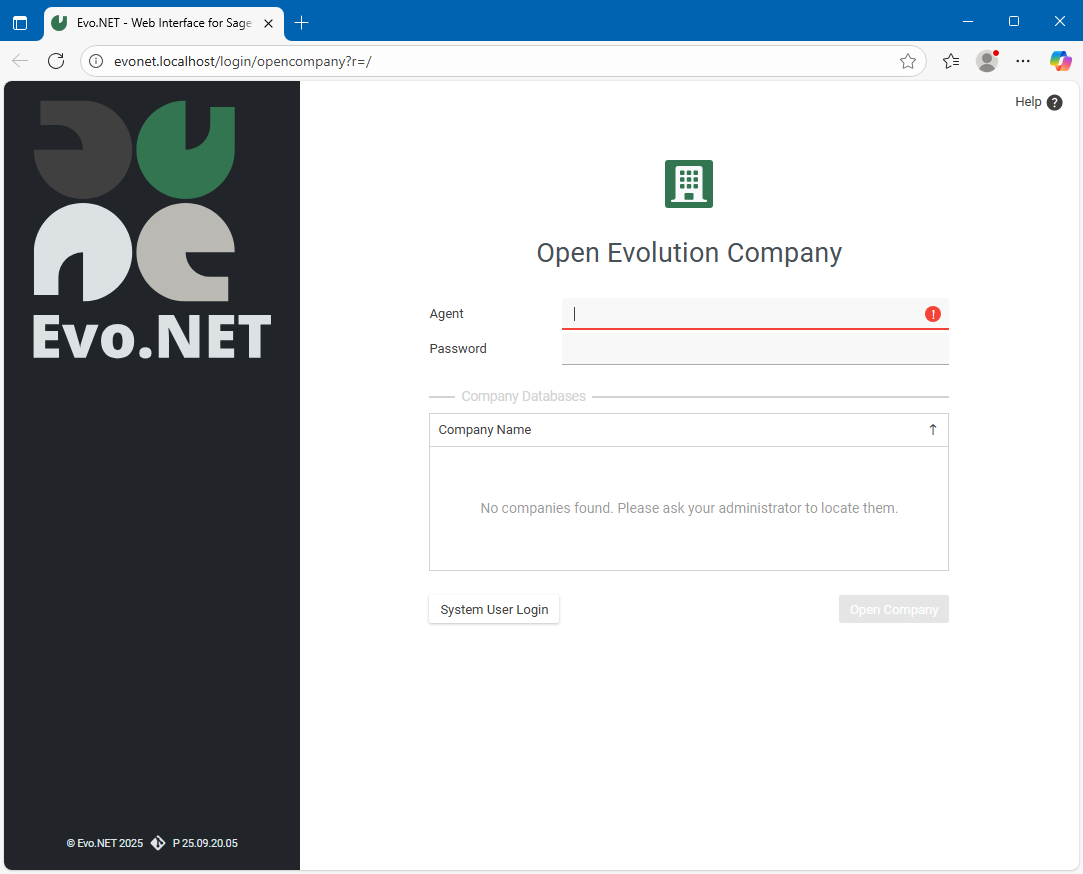Appearance
Manual Installation
Deploy the API Application Files
Download the latest Evo.NET build from our Evo.NET Downloads page. There are two .zip archives that must be downloaded: EvoNETAPI and EvoNETUI.
Extract the contents of the EvoNET.Build.xx.xx.xx.xx.API.zip into the folder you created for the API website (e.g. C:\inetpub\wwwroot\api.evonet.localhost).
Open the file appsettings.json with Notepad. 
appsetting.json
// appsettings.json
// Important: Escape special characters in this file, e.g. "\\", "\/", "\""
{
"ConnectionStrings": {
// Set the ConnectionString for your Evolution Common Database (e.g. SageCommon)
"EVCommonDBConnectionString": "Server=YOUR_SERVER_NAME;Database=YOUR_EVOLUTION_COMMON_DATABASE_NAME;Integrated Security=false;User=sa;Password=YOUR_SA_PASSWORD;Encrypt=False;"
},
"JwtIssuerSettings": {
"Issuer": "EvoNETAuthority",
"ValidFor": 20000, // minutes ~2weeks
"SecretKey": "0123456789ABCDEF0123456789ABCDEF0123456789ABCDEF0123456789ABCDEF" // Change this to a unique value
},
"JwtValidationSettings": {
"ValidIssuer": "EvoNETAuthority",
"ValidateIssuer": true,
"SecretKey": "0123456789ABCDEF0123456789ABCDEF0123456789ABCDEF0123456789ABCDEF" // Must be same as above
},
"Logging": {
"LogLevel": {
"Default": "Error"
}
},
"AllowedHosts": "*",
"ServerUrls": {
// If no prefix, will assume HTTPS://
"AppServerUrl": "", // UI Server name, e.g. "demo.evo.net.za" or "http:\/\/demo.evo.net.za" or "evonet.localhost"
"ApiServerUrl": "" // API Server Name, e.g. "api.demo.evo.net.za" or "api.evonet.localhost"
}
}Provide, at a minumum, values for the following:
EVCommonDBConnectionString: A ConnectionString for your Evolution Common Database.
ServerUrls: The Host names of the web sites you created.
WARNING
This file must remain a valid JSON file. If you have characters in your names or passwords that are reserved characters, they must be escaped. e.g. Backslashes must be doubled MYSQLSERVER\\MYSQLINSTANCE, double quotes and forwardslashes must be escaped mypa\"\/word.
TIP
Make a backup of your appsettings.json file so that you can replace the default one quickly if you overwrite it with a new one during an upgrade.
If the web site was not already started, start it in IIS Manager.
You should now be able to browse to the Host name of the web site you created and should get a response.

INFO
If the site does not return a response and displays an error message, please see our Troubleshooting API Startup section.
Deploy the UI Application Files
Extract the contents of the EvoNET.Build.xx.xx.xx.xx.UI.zip into the folder you created for the UI website (e.g. C:\inetpub\wwwroot\evonet.localhost).
Open the file serverurls.txt with Notepad. 
js
// serverurls.txt
const serverUrls = {
// DO prefix with HTTP(S)://
appUrl: "", // e.g. https://demo.evo.net.za or http://evonet.localhost
apiUrl: "", // e.g. https://api.demo.evo.net.za or http://api.evonet.localhost
}Fill in the values for appUrl and apiUrl with the Host names of the web sites you created (including protocol prefix).
TIP
Make a backup of your serverurls.txt file so that you can replace the default one quickly if you overwrite it with a new one during an upgrade.
If the web site was not already started, start it in IIS Manager.
You should now be able to browse to the Host name of the web site you created and should get a response without any errors displayed.

INFO
If the site does not return a response and displays an error message, please see our Troubleshooting UI Startup section.
